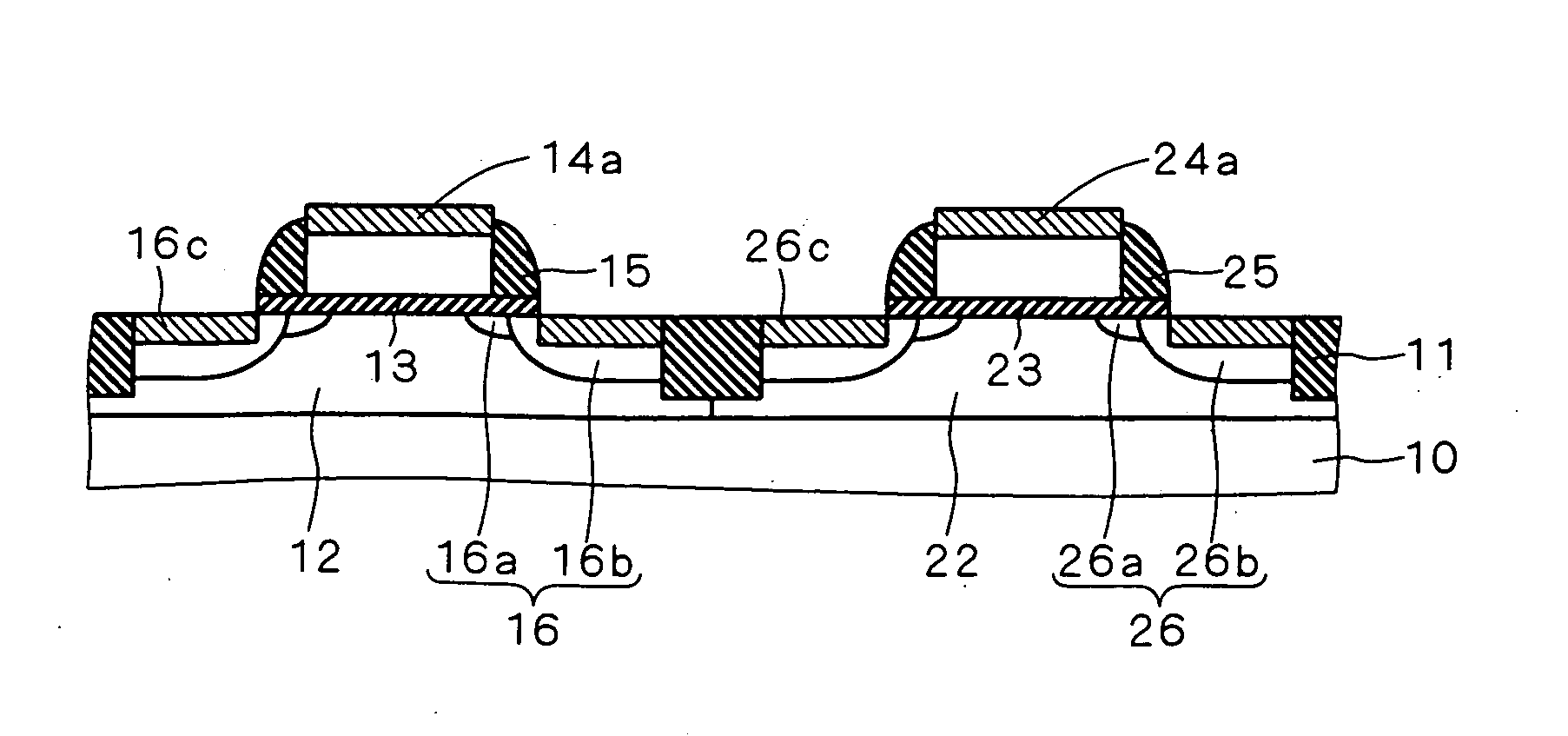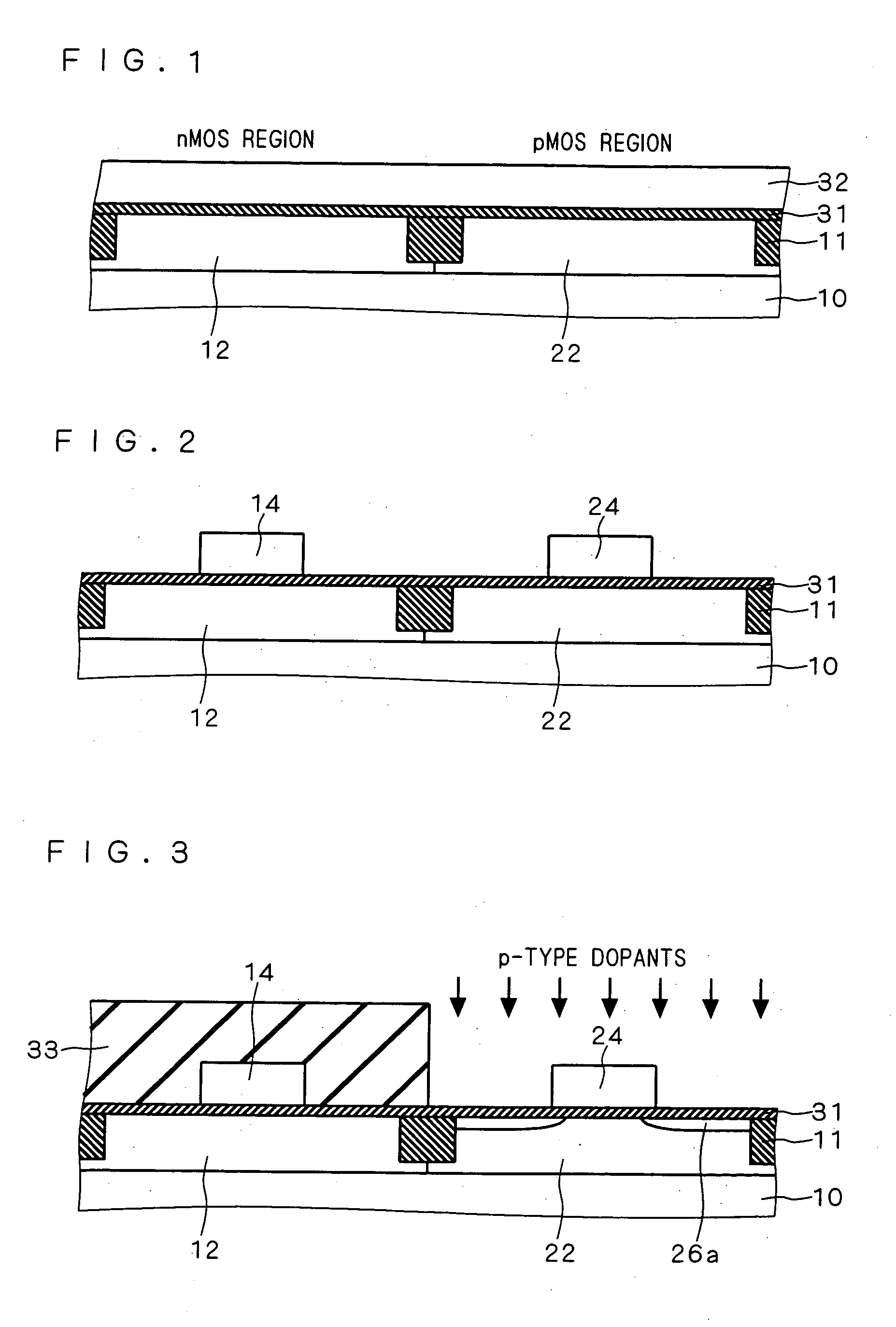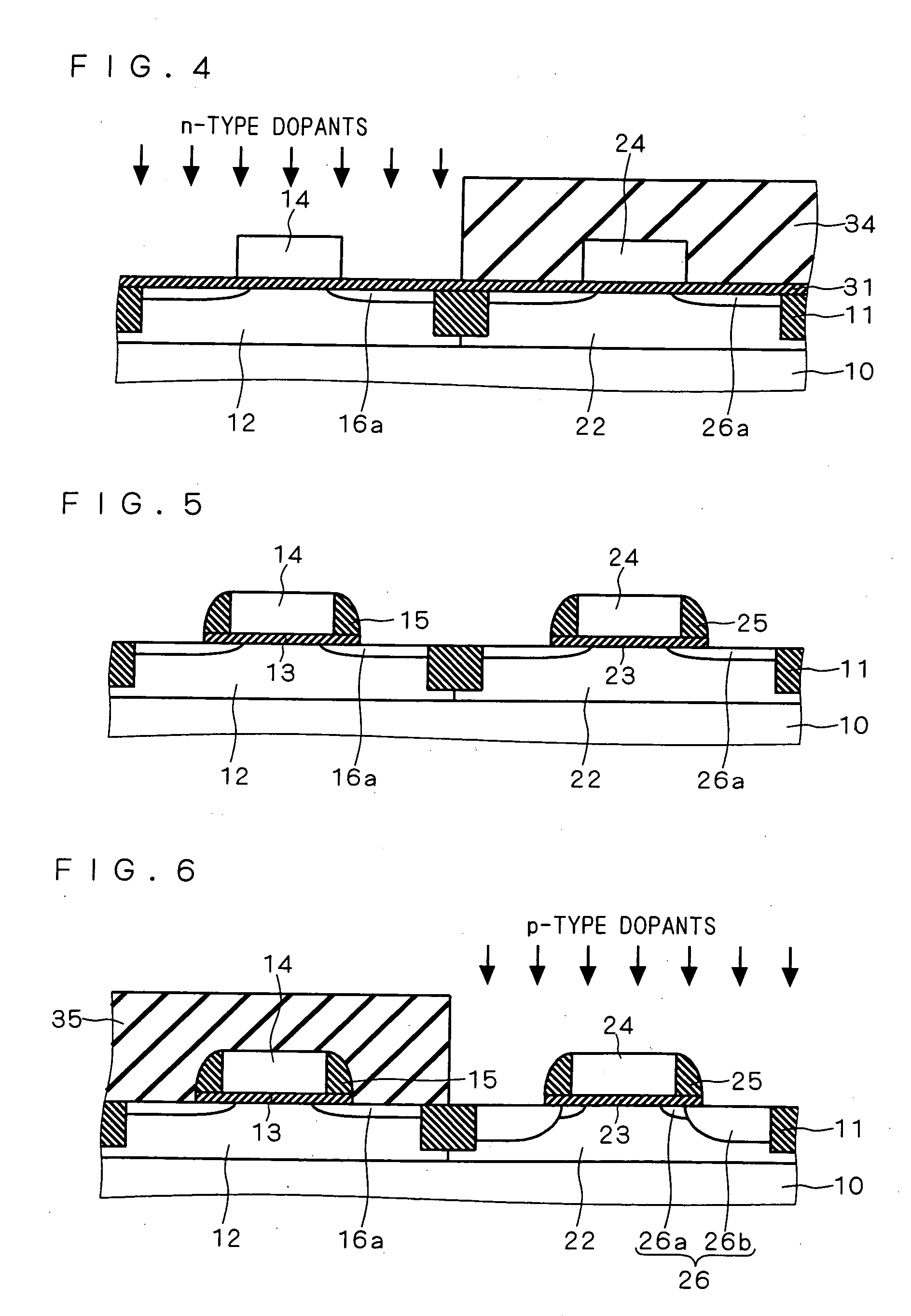Semiconductor device including gate electrode for applying tensile stress to silicon substrate, and method of manufacturing the same
a technology of tensile stress and silicon substrate, which is applied in the direction of semiconductors, semiconductor devices, electrical equipment, etc., can solve the problems of inapplicability to sti, insufficient activation annealing, and large number of problems to be solved, so as to improve carrier mobility and simplify manufacturing steps
- Summary
- Abstract
- Description
- Claims
- Application Information
AI Technical Summary
Benefits of technology
Problems solved by technology
Method used
Image
Examples
first preferred embodiment
[0026] The present inventors have found that when amorphous silicon including a large number of ions implanted therein undergoes thermal processing to form recrystallized polycrystalline silicon (polysilicon), volume expansion of silicon occurs. It has also been found that the amount of expansion of silicon is controlled largely by the mass number of ions implanted therein, and more particularly, that the amount of expansion increases as the mass number of implanted ions becomes larger (more specifically, 70 or more). It has been confirmed as well that the amount of expansion increases as the implant dose of ions increases.
[0027]FIGS. 1 through 9 illustrate steps of manufacturing a semiconductor device according to the first preferred embodiment of the present invention. In each one of FIGS. 1 through 9, the left half shows a region for forming an NMOS transistor (hereinafter called as an “nMOS region”), and the right half shows a region for forming a pMOS transistor (hereinafter c...
second preferred embodiment
[0048] As discussed in the first preferred embodiment, ions having a relatively small mass number are implanted into the gate electrode 24, and therefore, there will be little residual stress to be applied to the gate electrode 24 even with the existence of the silicon oxide film 40 thereon. In the case of ion implantation in large quantity, however, there may be some compressive residual stress to be exerted on the gate electrode 24 even when the implanted ions have a small mass number.
[0049] The steps of manufacturing a semiconductor device according to the second preferred embodiment of the present invention will be given. First, following the same steps as those of the first preferred embodiment shown in FIGS. 1 through 8, the NMOS and pMOS transistors are provided. Further provided thereon is the silicon oxide film 40. Next, the silicon oxide film 40 in the pMOS region is removed so that an opening is defined therein, as shown in FIG. 11.
[0050] Thermal processing is thereafte...
third preferred embodiment
[0053] In the first and second preferred embodiments, ion implantation for forming the n-type source / drain diffusion layer 16b is also operative to implant ions into the gate electrode 14 for expansion thereof. Alternatively, ion implantation step into the gate electrode 14 may be performed separately from the implantation step for formation of the n-type source / drain diffusion layer 16b.
[0054] The steps of manufacturing a semiconductor device according to the third preferred embodiment of the present invention will be given. First, following the same steps as those of the first preferred embodiment shown in FIGS. 1 through 6, the nMOS and pMOS transistors are provided. Next, a resist mask 36 is formed to have an opening in the pMOS region. Thereafter, prior to formation of the n-type source / drain diffusion layer 16b in the NMOS region, electrically inactive ions having a relatively large mass number (70 or more) such as Ge ions are entirely implanted with a dose of 4×1015 / cm2 or m...
PUM
 Login to View More
Login to View More Abstract
Description
Claims
Application Information
 Login to View More
Login to View More - R&D
- Intellectual Property
- Life Sciences
- Materials
- Tech Scout
- Unparalleled Data Quality
- Higher Quality Content
- 60% Fewer Hallucinations
Browse by: Latest US Patents, China's latest patents, Technical Efficacy Thesaurus, Application Domain, Technology Topic, Popular Technical Reports.
© 2025 PatSnap. All rights reserved.Legal|Privacy policy|Modern Slavery Act Transparency Statement|Sitemap|About US| Contact US: help@patsnap.com



